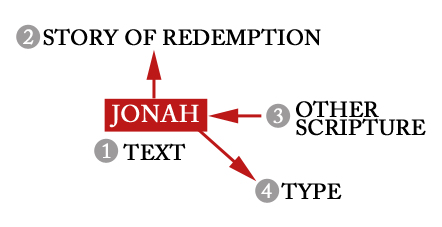Preaching redemptive or gospel-centered sermons has received a wonderful Renaissance of late. I see more preachers trying to better articulate the story of the Bible as ultimately one of God’s Kingdom fulfilled in the person and work of Jesus. The number of sermons that seek to flee the chains of moralism and ground their congregants’ behavior as a response to the grace of God appears on the rise, and I’m very grateful for it. However, with this shift of focus, a question I frequently hear asked is, “How do I keep my messages from sounding the same each week?” The scenario usually presents itself this way: in order to “get to Jesus” the preacher finds where his text stands in relation to the Big Story of Redemption (i.e., the meta-narrative) and then proceeds to demonstrate how that text both fits in the Big Story which ends in Christ. At first blush, there’s absolutely no problem with that. However, it can be tough when you preach a series from the same book (especially in the Old Testament). For example, a preacher is doing a series in Jonah but finds himself repeating the same thing each week in order to “get to Jesus.” Think about it, it’s not like week 2 of Jonah is different than week 4 of Jonah as it relates to its place in redemptive history. So each week, the pastor feels like he’s in a preaching cul-de-sac where every sermon conclusion looks like the one before it.
Let me suggest three other ways that may help you leave the cul-de-sac and still preach redemptively. I’ll start with the one most important to me.

1) TEXT
This is the first place I start. It’s also can be a huge help for preachers who get stuck in redemptive preaching. I want to discover if there any redemptive themes in the specific text itself? Preaching redemptively-centered sermons means that at the center of every message is the gracious work of God on our behalf. In Jonah’s case, I don’t ever have to leave the book because one major theme is God’s grace to an undeserving people (Ninevites). But don’t fear, each text we study can at least tell us something about us, about God, and how both interact with each other. It might also help to remember that it’s not only understanding the truth that God rescues us but how that rescue takes place within these texts that can bring variety to our preaching. Sin isn’t a flat concept but multidimensional. We are broken, condemned, afflicted, without peace, etc. These “sin situations” are replete in the Scripture and provide wonderful places where the preacher can show how God’s grace specifically and uniquely addresses them. Again, this alone can bring great variety to your sermons. And you can do it all without ever leaving the specific text under study.
2) STORY OF REDEMPTION
This is where the preacher “goes up with the story” by placing it in the context of the Big Story of Redemption. It’s usually my second movement in seeing how the text is redemptive in nature. As I mentioned, this is the route many of the guys I know not only go but have a hard time leaving. I place it in the list because it is a good way of getting the redemptive power of a text. But it can keep us in a cul-de-sac if that’s all we know to do each week.
3) OTHER SCRIPTURE
I think it might greatly benefit a preacher to see if there are any places where the text under study has been interpreted redemptively at a later point in the Bible. For example, how might Jesus’ reference to Jonah (Mt. 12:38-45) give us insight into preaching the text? If, like Jonah, you are studying through an Old Testament text, trace the lines of that text to see how it surfaces in the New Testament. So ask yourself, where does this text break the surface of the Bible later?
4) TYPE
Does this text point to Christ’s redemptive work in a typological fashion? Are there figures/events/statements that show us Christ and his work at Calvary in a shadow sense? While one must be careful using typology with integrity, it still can be a valid and important way to preach the redemptive nature of a text. I appreciate Tim Keller’s response when asked how he approached typology in the Old Testament. He responded that it was “an instinct” that took practice and a hearty understanding of the major themes of the Bible. Yet, done effectively, using types helps the listener realize the Bible ultimately points to Jesus.
There you go. Three other ways in addition to the Story of Redemption to help move your redemptive sermon from sounding the same each week. What else would you add?
